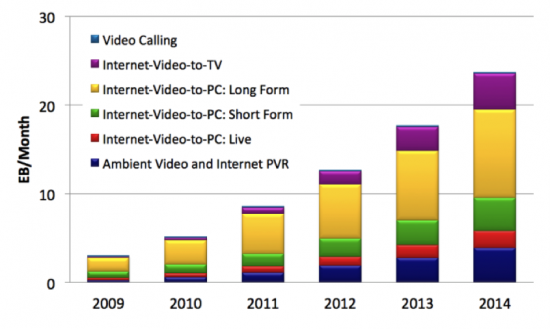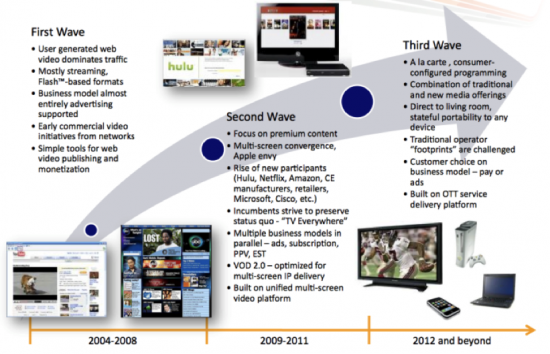 By Tom Ohanian, Cisco Service Provider Sales Business Development Manger
By Tom Ohanian, Cisco Service Provider Sales Business Development Manger
The television viewing experience that since its inception consisted of gathering in the family living room and watching live television has clearly changed. Today, television viewing perhaps should be changed to the more versatile term of content consumption. Regardless of whether that content is consumed on a television in a living room or on a mobile device on a crowded subway, the behavior of content consumption and the delivery of content are rapidly evolving. As these business models and consumer behaviors evolve, so too do the complexity and technology of delivering this content.

We are currently in the third wave of Internet Protocol (IP) video. The first wave, covering the years 2004-2008, was characterized by user-generated web videos, applied primarily as a streaming video model, and included early video initiatives from network television broadcasters. The second wave, from 2009-2011, saw the introduction of a new class of participants, including but not limited to Netflix, Amazon, and other retailers. In this wave, the TV Everywhere (TVE) initiative was established as a means of offering additional device accessibility to support the Pay-Television model. The third and current wave cannot easily be characterized because of its rapidly evolving and transforming nature. Thus far, this wave has introduced device-to-television beaming, a customer choice of ad-free or ad-supported content, and significantly, the offering of Over-the-Top (OTT) service delivery platforms from a variety of organizations.

While TVE and OTT offerings share some similar characteristics and requirements, they largely differ; not due to technical requirements or considerations, but as a result of business models and how content is made available to the consumer. With TVE, typically a content owner and provider will provide access to content on various devices (e.g. computer, tablet, smartphone) as long as the consumer has a current Pay-TV subscription. The user is prompted to login and the user’s credentials are authenticated, allowing the user to access streams of live and video on demand (VOD) content. It is the decision of the content provider as to whether access to the content is limited to only in-home or out-of-home.
It is important to note the relationship of the cost of distribution and the number of viewers. As the number of viewers increases, so does the cost of distribution. In this context, distribution refers to either streaming or downloading content and is typically metered by CDN usage.

Note the straight line representing the traditional broadcast model, where the cost of transmission is fixed regardless of the number of viewers. The important aspect herein is that the existing cost model of distributing and streaming content in actuality has a penalizing effect on content owners—the more successful the offering, the higher the distribution cost. The OTT service provider must account for these charges.
Lastly, consumers do not have a predisposed mindset of having to choose what content they would like to consume due to the total amount of data available to them within their monthly service provider agreement. The growth of any OTT offering is dependent upon enabling the consumer to experience content consumption in the same manner as the broadcast television experience.
There are many functional and technical considerations that must be addressed in offering an OTT service. Content consumption trends towards increased mobile device viewing are growing year over year. Both TVE and OTT models offer benefits and options to the viewing audience and will continue to be transformed as user expectations and business models evolve.

CONNECT WITH US